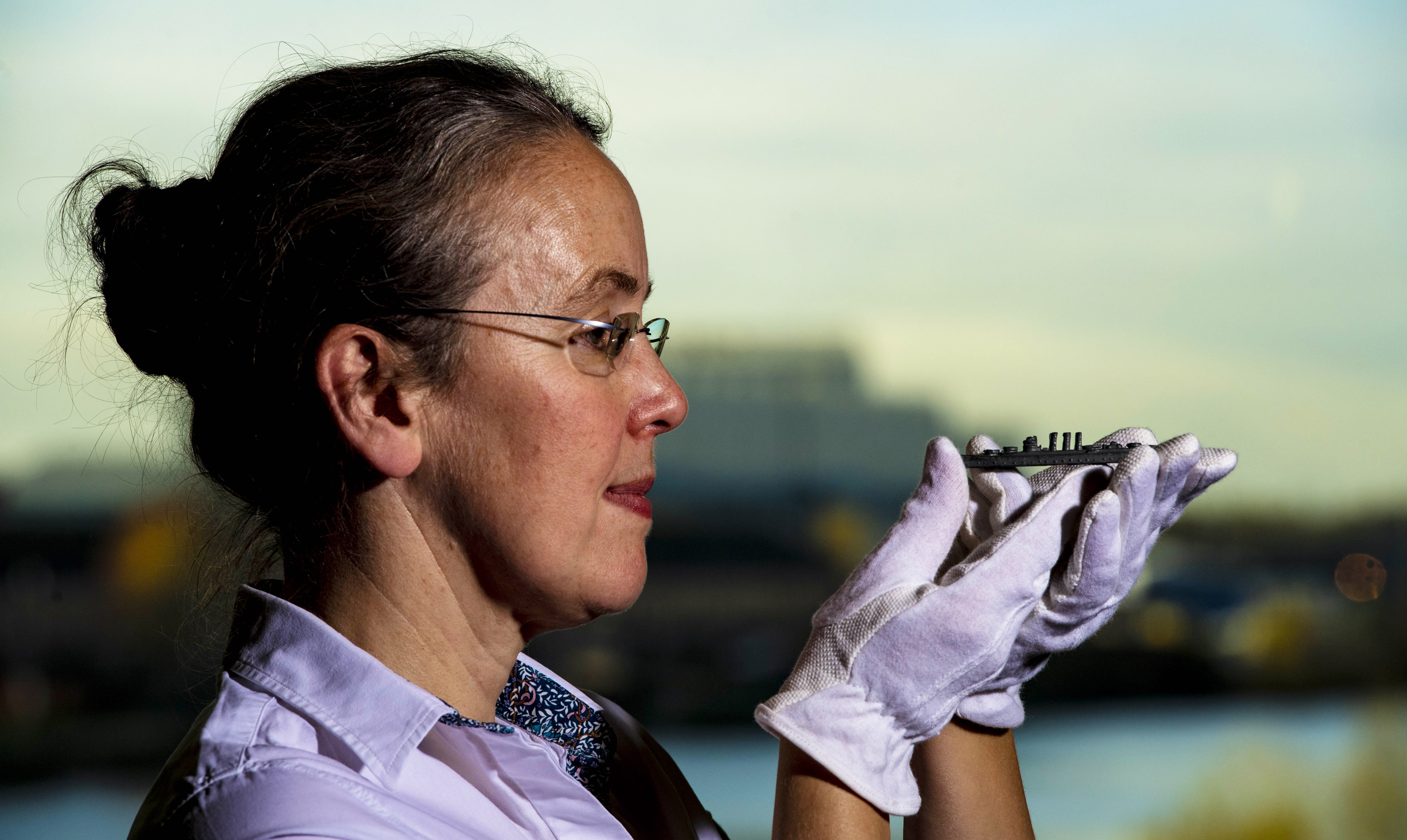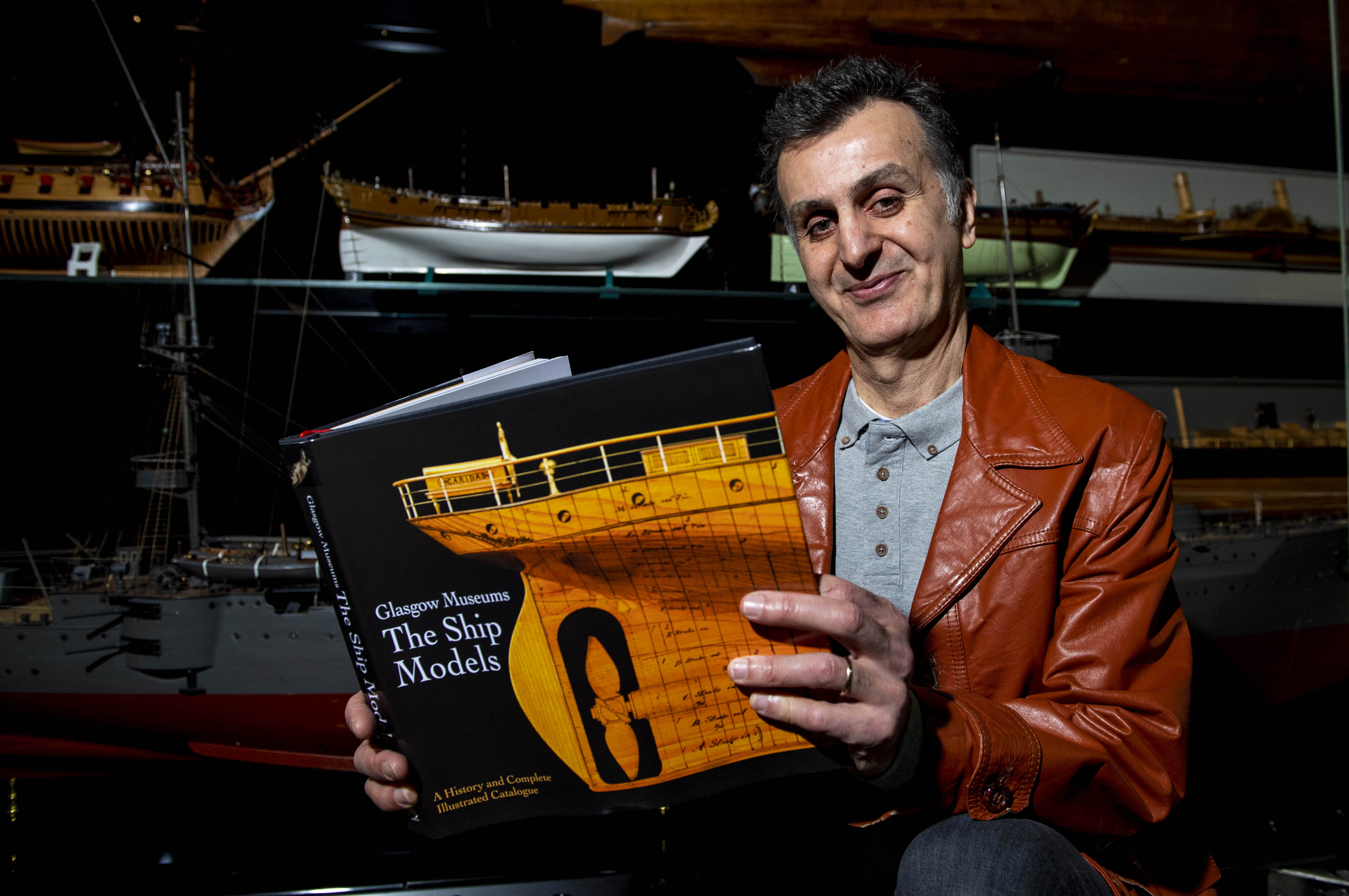Glasgow Museums’ vast collection of model ships has fascinated visitors of all generations, and safeguarded mementos of the glory days of Clyde shipbuilding.
Now, for the first time, all 676 models or model groups have been catalogued in a new book, launched today on the banks of the Clyde at Riverside Museum.
Taking over a decade to compile, the book explores the collection in detail, including models of some of the most famous Clydebuilt ships, such as the grand liner RMS Queen Mary and the Royal Navy battleship HMS Hood.
There are also scale replicas of historically significant vessels including the first European passenger steamer Comet, and the world’s first turbine-powered vessel King Edward.
As well as the more iconic ships, the collection also features the Clydebuilt ships that have fulfilled important roles across the world, from tea clippers to yachts, oil tankers to tugs.
Emily Malcolm, the catalogue’s lead author and curator of Glasgow Museums’ ship model collection since 2003, said: “They’re an invaluable part of our museum collection. It’s been a fantastic project and a real privilege to work on.
“We’ve investigated the history of the ships, how the models were made, the history of exhibitions and not forgetting the history of amateur model making which is a craft and skill in its own right.
“To present the collection fully and have a photograph of every single model and model group has been a lengthy process but really worthwhile now that’ it’s been completed.”
She added: “Glasgow Museums’ internationally important collection of ship models is unparalleled, it provides an historic record of ship-building in the west of Scotland and is a true asset of the city.
“This book beautifully illustrates each and every one of the city’s 676 ship models, ranging from the eighteenth century, through every decade of the nineteenth and twentieth centuries right up to the present day.
“For the first time ever we can show the collection in its splendid entirety. Moreover, we can gain a real appreciation of the extent and quality of the ship models and through them understand our strong maritime history, something which is synonymous with the river Clyde the world over.”
Amassed mainly through relationships between shipbuilders, ship owners and Glasgow Museums over the last one hundred and fifty years, the models range in size from a few centimetres to over six metres in length and represent ships built on every part of the Clyde.
The book includes a description and stunning images that reveal exquisite detail of each of the 676 models or model groups, together with newly researched and in-depth chapters about the making and history of models and fascinating historic photographs of exhibitions, model makers and model workshops.
Professor John R Hume, historian and long-time supporter of Glasgow Museums, added: “It was a pleasure to assist Glasgow Museums in their endeavour to catalogue all 676 models in the city’s collection.
“The superb photography and design of the book is immediately striking and allows readers to appreciate the extraordinary depth and quality of this internationally important collection.”
Ship models were often constructed within the industry to refine the design of a new vessel or to illustrate and promote a completed vessel at exhibitions.
Most were built at a scale of 1:48, 1 inch to 4 feet, and in one of two forms; a half hull, which shows one half of the hull as if divided down the centre line of the vessel or a full-hull, which was usually fitted with a realistic framework of how the finished ship would look.
There is also an extensive array of fine amateur models, including everything from tiny miniatures made by French prisoners during the Napoleonic Wars to the much-loved Clyde puffer and even a talented example of the familiar ship in a bottle.
Cemal Ozturk, the last professional ship model maker in Glasgow, said: “Every single model is a work of art. Every single bit is blood, sweat and tears. It’s heavy, really hard work. You work on a model for thousands of hours.
“The ships are gone, but all the models are here. They tell us the story of the Clyde’s shipping heritage, the people that worked on it. They’re all long gone, but you look at these models and you see the past.
“I wouldn’t like to put computer graphics down, but these are the real things, they’re tangible. They are three dimensional and I hope they’re a good stimulus for the younger generation.”
Cemal, who has been building models since his childhood, added: “When you’re working at 4am thinking that a truck’s going to come for the model at 8am and you’re still nowhere near finishing, there’s a big pressure and you hate everything!
“At the end of the work it’s a good feeling and you’re happy you’ve created something beautiful.
“You learn every day, particularly if you’re building historic models where you have to do your homework really well.”
First displayed in Kelvingrove Art Gallery and Museum’s ‘Ship Court’, the models were moved to the newly created ‘Clyde Room’ at the Museum of Transport in Albert Drive in 1978.
By the time the museum moved to the Kelvin Hall in 1988, the Clyde Room had become a much-loved feature, so it was recreated on a larger scale and proved incredibly popular.
Riverside Museum now displays around one quarter of Glasgow’s world famous ship model collection, which remains a favourite exhibit with visitors.
Emily added: “Models have always been interpreted as representations of a real ship. Researching this book has enabled us to consider ship models more fully as objects in their own right.
“We have sought to highlight the work of the generally uncredited craftsmen who made the models.
“Their dexterity and creativity as individuals is inspiring, and collectively they have left an exceptional cultural legacy from the heart of shipbuilding and maritime trade on the Clyde.”
Glasgow Museums: The Ship Models – A History and Complete Illustrated Catalogue is now available to buy at Riverside Museum and can be ordered from www.booksource.net. It is co-published with Seaforth Publishing, £35.

Enjoy the convenience of having The Sunday Post delivered as a digital ePaper straight to your smartphone, tablet or computer.
Subscribe for only £5.49 a month and enjoy all the benefits of the printed paper as a digital replica.
Subscribe © Craig Williamson / SNS Group
© Craig Williamson / SNS Group
 © Craig Williamson / SNS Group
© Craig Williamson / SNS Group